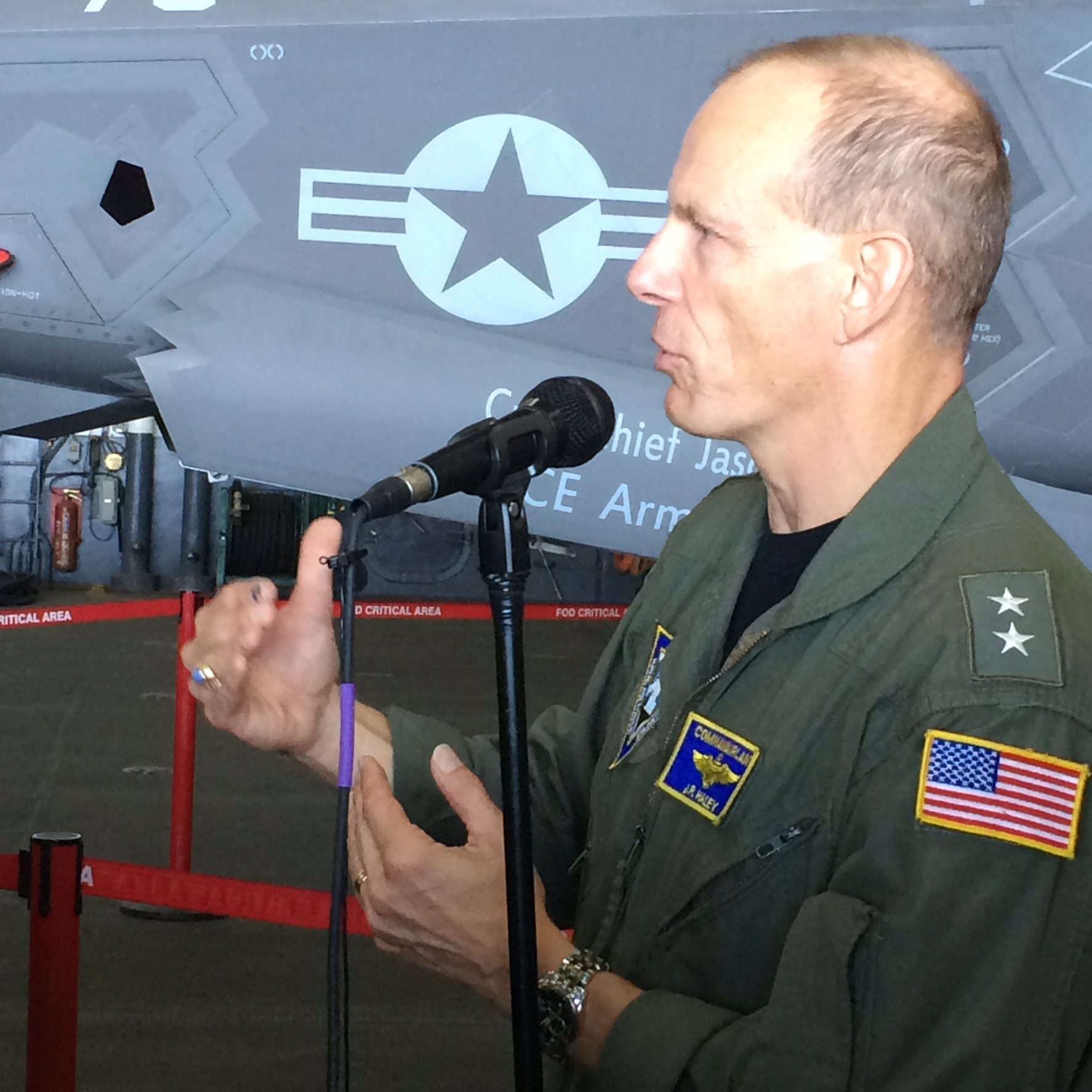USS DWIGHT D. EISENHOWER — The Navy’s variant of the F-35 joint strike fighter completed its second set of test flights Friday on the aircraft carrier Dwight D. Eisenhower, marking another milestone in a program that’s faced much criticism.
The second phase of developmental tests began about a week ago and wrapped up on Friday, when test pilots checked off some of the high-risk tests to determine the minimum catapult speed required for the airplane to take off from the carrier, said Cmdr. Christian Sewell, a Navy F-35 test pilot.
Sewell said there are some logistics tests the test crew will finish by Saturday before the second set of developmental tests will officially be finished.
The Navy brought a group of reporters out about 100 miles off the coast of Norfolk, Va., on Friday to see the final day of test flights.
The scope of the program is unprecedented. Lead contractor Lockheed Martin is developing three variants of the aircraft: a carrier-launched jet for the Navy, a runway-capable plane for the Air Force, and a jump-jet version for the Marine Corps. The U.S. is developing the aircraft with eight partner nations and is selling the fighter to South Korea, Japan and Israel.
At the same time, the U.S. military’s acquisition of the fighter has been plagued by scheduling delays and budget overruns, leading aviation critics and members of Congress to have serious doubts about the program. Development of the aircraft has been beset by an array of technical problems, the latest of which is an ejection seat that snapped the necks of some lighter test dummies, according to a Defense News report.

Rear Adm. John Haley, commander of Naval Air Force Atlantic, said the aircraft will change the way the battle group works (Jacqueline Klimas/Washington Examiner)
Developers are confident they can get past those problems, and Rear Adm. John Haley, commander of Naval Air Force Atlantic, said the aircraft will change the way the battle group works. While it’s a capable strike fighter, its sensors will also allow ships and planes in a battle group to spot threats before they can spot it.
“I’m not saying that there aren’t airplanes out there that could beat this thing if you put it in a bad position. What I’m saying is the airplane has such great sensors the chances of it getting in that situation are slim,” he said.
The Navy’s variant conducted its first test flights in November 2014 aboard the carrier Nimitz off the coast of San Diego.
During the second developmental test aboard the Eisenhower that wrapped up this week, testers focused on flying in high winds up to 40 knots, including some operations during Hurricane Joaquin. Several sailors also measured the noise level of the engines to determine what type of hearing protection is needed for sailors on the flight deck.
The third and final test, set for August 2016, will let test operators fly the aircraft with additional weight in external weapons before delivering it to the fleet.
Sewell said testers were also able to fly with the generation III helmet for the first time at sea on Thursday night and saw significant improvements over the generation II, including reduced green glow — a problem with previous versions of the $400,000 helmet.
“Now that I’m used to it, it’s great. I wouldn’t want to fly without it,” he said.

